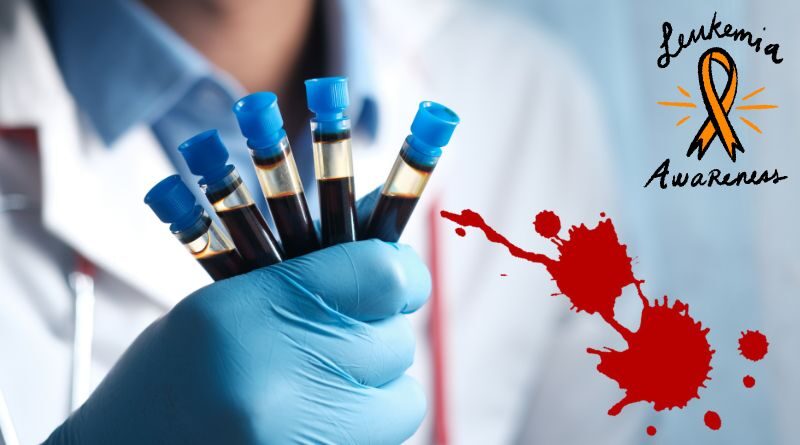How to Know About Leukemia: Symptoms, Signs, Causes, Types, and Treatment
The word leukemia literally means white blood, which refers to the type of cell that cancer cells in the bone marrow produce. Leukemia isn’t a single disease but rather a family of blood-borne cancers that affect the bone marrow, from which red blood cells, white blood cells, and platelets are made; these three kinds of cells are collectively known as the blood components.
The symptoms you should be aware of leukemia
Leukemia is a cancer of the blood-forming tissues. The symptoms you should be aware of leukemia include fatigue, lack of energy, excessive sweating (even when at rest), white or pale appearance of fingernails and/or mucous membranes (e.g., inside the mouth or nose), fever, recurrent infections (typically unrelated to the infections caused by leukemia), abdominal bloating and pain, shortness of breath or difficulty breathing with no cold or other infection identified as the cause of difficulty breathing.
Leukemia is one of the two most common types of childhood cancers. It primarily affects children under age five; only 1% are diagnosed before their first birthday and just 3% after age five years old. The average age for diagnosis is 18 months old.
The signs you should be aware of leukemia
Leukemia is a type of cancer that affects blood cells in the bone marrow. Cancer cells in the bone marrow cause too many abnormal immature white blood cells, red blood cells, or platelets. These unhealthy blood cells are not able to fight infection as well as healthy ones. They also do not clot well and can break away from clots so an injury may bleed excessively for a long time. Symptoms usually appear slowly over time, with more symptoms showing up each day until it becomes full-blown leukemia.
The causes you should be aware of leukemia
There are various risk factors for leukemia. Exposure to toxins in the environment or occupationally such as lead, mercury or arsenic may cause acute myeloid leukemia. Certain genetic disorders can also result in a higher risk of getting this type of cancer. Viruses such as hepatitis B and C can cause acute lymphoblastic leukemia by altering genes in white blood cells that regulate normal cell growth. Chemotherapy treatments for other cancers may also increase your risk of developing leukemia. Even those with no apparent risk factors have a chance of developing it at some point due to the diversity of known factors leading up to leukemia diagnosis
The different types you should be aware of leukemia
Leukemia is cancer that starts in the bone marrow. There are two main types of leukemia- one involves mostly immature white blood cells called acute lymphoblastic leukemia (ALL), while the other has mainly mature white blood cells called chronic lymphocytic leukemia (CLL). People with ALL may have difficulty breathing, a fever for more than four weeks, swollen lymph nodes in their neck or underarm area, night sweats, or lumps in their skin. The symptoms of CLL include a weight loss of more than 10 pounds from normal weight, mouth sores that don’t heal within six weeks, and high numbers of abnormal blood cells on tests such as a complete blood count (CBC) and platelet count tests.
How leukemia is treated?
For many years the standard of care for leukemia has been a combination of chemotherapy (anti-cancer drugs) and radiation therapy. Chemotherapy damages rapidly dividing cells such as cancer cells or infectious organisms. Radiation therapy affects cancer cells by producing ionizing radiation that can interfere with the DNA replication process. In fact, treatments like these are often referred to as biological weapons because they kill cells by interfering with their growth process. While there are countless different types of leukemia treatments available today, if you or someone you know is experiencing symptoms of leukemia it’s important that you discuss these signs with your doctor as soon as possible.
For more updates regarding Health & Fitness, keep browsing Blogs Gurru.




